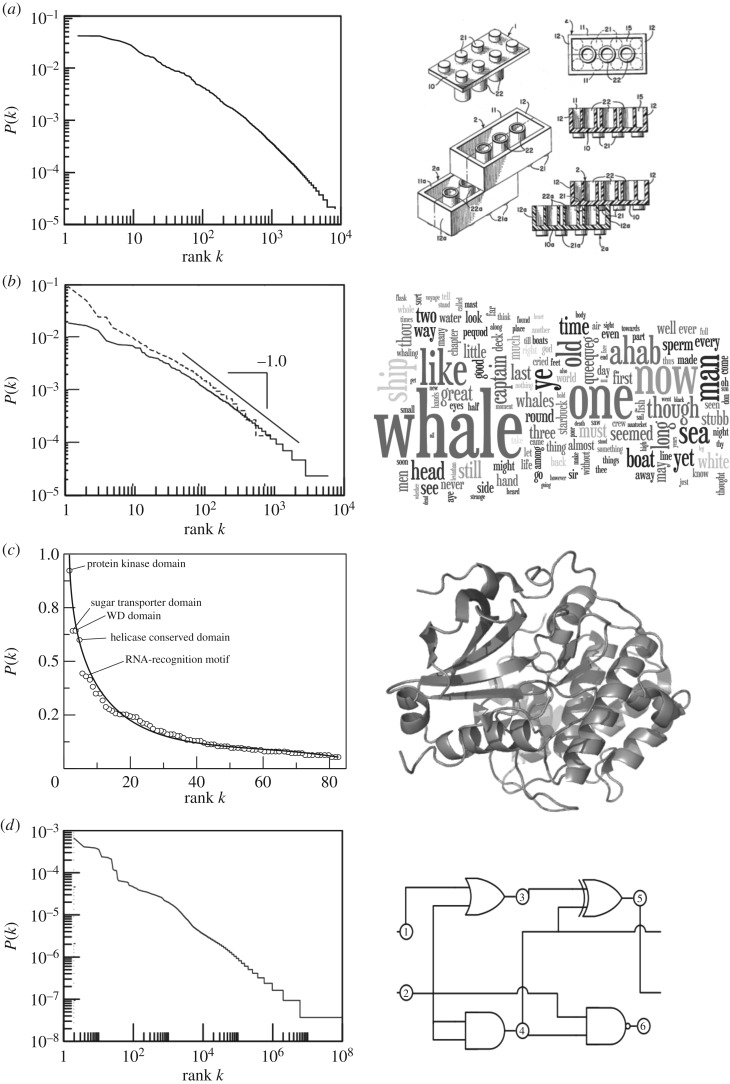Figure 1.
Zipf’s Law distributions are commonly found in very different systems candidates to display open-endedness. Here, we show several examples of scaling behaviour involving (a) LEGO systems, (b) written language and (c) proteins. In (a), we display (in log scale) the probability of finding the ith most abundant type of LEGO brick within a very large number of systems (see details in [18]). In (b), the log-scale rank-size distribution of Herman Melville’s Moby Dick is displayed. The dashed line shows the frequency versus rank for words having length 5, which is the average length of words in this particular book. The plot displayed in (c) shows, with linear axes, the corresponding rank distribution of protein folds in a large protein database (redrawn from [19]). The line is a power-law fit. Here the names of some of the domains, which are associated with particular functional traits, are indicated. (d) Zipf’s Law in the frequency of logic modules used in evolved complex circuits (adapted from [20]).

